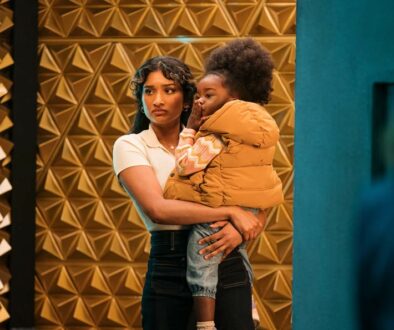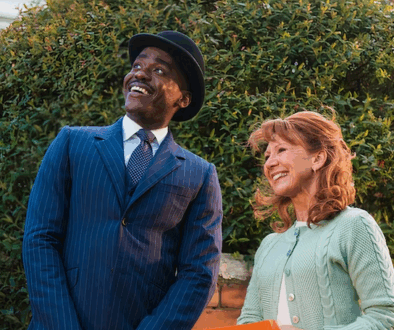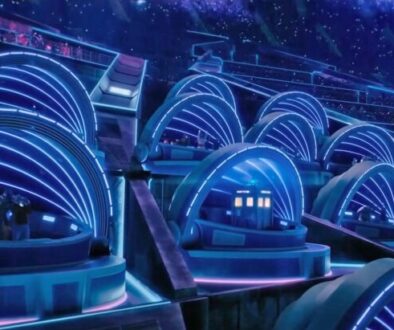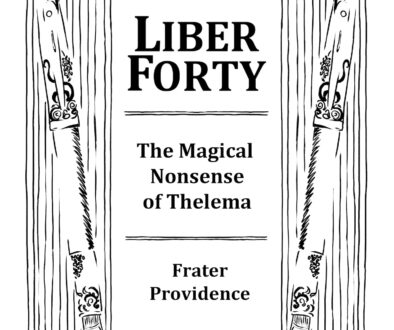Dialectic of the Doctors, Part 1
 1. Chickens, Eggs, Context
1. Chickens, Eggs, Context
Remember the Bird Sanctuary in ‘The Three Doctors’? Makes me think of eggs and chickens. The solution to that riddle is that neither came first because both emerged dialectically, as the negations of previous forms, through the transformation of quantity into quality. The incremental changes of evolution. Just as the chick is the negation of the egg, so they are one. Just as the egg/chick unity is the negation of older forms, so they are one with older forms, part of a sequence. Evolution is the natural Dialectic in action. Every form is transitional.
Dialectical materialism is one way of saying ‘Marxism’, but there is also the Dialectic of Hegel. Marx gets the dialectic from Hegel but, famously, he has to turn it upside down in order to set it on its feet. Marx makes the dialectic material. The dialectic of Hegel is thoroughly, even perversely, ideal. (To clarify, ‘ideal’ or ‘idealist’ in the philosophical sense, in the sense of meaning something like ‘the realm of ideas or thoughts, or at least of ‘the immaterial’.)
Tell you what, let’s try to explain this in terms of ‘The Three Doctors’.
For some reason, ‘The Three Doctors’ strikes me as a story particularly suited to ruminations on the Dialectic. I could speculate as to why this is. Baker and Martin are, by accident or design, habitual dialecticians. The ‘weapon’ that will end the Atrios-Zeos war forever is peace (’Armageddon factor’); Axonite is mutable and spectacular capital and even has a ‘cycle’ (’Claws of Axos’); the Solonians have a natural lifecycle which is inimical to colonialism (’The Mutants’); there is a cycle of Edenic life into fallen drugs and fake euphoria (‘Nightmare of Eden’); there is an interrelated unity of contradictory micro and macrocosms (’Invisible Enemy’); Eldrad is a nightmare from (of) history and goes through a process of change from fossil to woman to tyrant (’Hand of Fear’). And there is wider context. The end of the 60s and the dawn of neoliberalism, for instance. There is the apparent failure of revolution and dialectical materialism in favour of antinomies of bourgeois thought – positivism/mysticism, reformism/conservatism. The producer of this story is a Buddhist and a Lefty, but also a BBC type. You can see where that all links together, I’m sure.
So lets dive in to this silly project. We might be able to explicate the Dialectic. We might manage the considerably more complex and challenging feat of explicating ‘The Three Doctors’. At the very least, it might be a giggle.
For me, anyway.
2. Theses, Assertions, Gnosis
Central to the Dialectic are the categories of totality, contradiction, change, negation, and mediation.
Also central is the concept of unity.
Unity is, in fact, the meta-category when it comes to the Dialectic. Within unity, the other categories spin.
Unity is closely related to totality, but not identical with it. The totality cannot always be a unity, and the unity is not a totality, though the totality may be comprised of unities.
Within the concept of the negation there lurks the negation of the negation. This is also identifiable as the unity of oppositions. It emerges from within other aspects of the Dialectic as an internal contradiction. The Dialectic thus tautologously supports its own claims by working according to them.
The negations still negate each other, yet exist in a unity. Unity is not equality or identity.
Also crucial is the concept of the transformation of quantity into quality. This occurs through negation, within a unity.
Essentially, the dialectic is a method. I personally think it works as a scientific method, or as part of a scientific method, because reality itself is dialectical… which is to say that there is something inherent in the way the material world functions which is mirrored in the concept of the Dialectic, and that’s why the Dialectic is such a powerful tool for understanding the material world. I think that the scientific method – when it transcends mere empiricism and becomes a form of reasoning – requires the kind of flexibility that is demanded by Dialectical thinking.
(But I’m fairly happy to consider dialectical materialism an Unverified Personal Gnosis. I don’t think it really matters.)
3. Sequence, History, Unity
‘The Three Doctors’ is a story concerned with the different versions (incarnations, regenerations, selves, whatever you want to call them) of the Doctor. As such, it is one of relatively few Doctor Who stories up to this point in the show’s history which acknowledge, let alone concentrate upon, the issue of the central character existing in multiple iterations, his many-selvedness, his status as a succession of identities, his nature as a series within a series. Generally, so far, stories have only addressed this at all because they are regeneration stories or post-regeneration stories (always remembering that ‘regeneration’ is a retro-fitted concept).
If, by the way, someone were to try to create a nice new greek word meaning ‘many-selvedness’, it would almost certainly be some kind of compound of ‘auto’ and ‘poly’. Please bear in mind that ‘poly’, ‘polis’ (for city), ‘politics’, and ‘polloi’ (as in ‘the hoi polloi’), all share the same root. The meaning they all share is that of ‘the many’.
But yes, ‘The Three Doctors’ takes up the issue.
It’s worth noting the difference between ‘The Three Doctors’ and ‘The Five Doctors’. The latter is a product of necessity. It must have certain things in it because of what it is: an ‘anniversary special’. ‘The Three Doctors’ is a product of freedom. It is not an anniversary special. It is a story from the tenth year of the program, a temporal marker which suggested to the production team that the moment had come to try out an obvious idea which had often been suggested to them by viewers: put the three actors who had played the role in a story together. It is freer even than regeneration or post-regeneration stories, in that even they are chained to the necessity of having certain form and content by the need to change the actor on screen, in other words by narrative. There is no need to do anything particular with ‘The Three Doctors’. There was no particular story they were compelled to tell. They didn’t even have to do it at all. It’s quite possible to imagine a version of Doctor Who which is essentially identical to the one we have except that it doesn’t have ‘The Three Doctors’ in it. Just write in a different version of him getting the TARDIS working again and shazam, we’re off to Inter-Minor. Even ‘The Two Doctors’ has more necessity than ‘The Three Doctors’, what with its roots in Troughton and Hines’ addition to the convention circuit and the travelling JN-T showbiz circus. There, at least, there is commercial impetus.
The relevance of this freedom inherent in ‘The Three Doctors’ lies in noticing what it does despite there being no necessity, in other words: the story it chooses to tell.
The story it chooses to tell is one of the Doctor split into three but multiplied rather than diminished, and then ultimately magnified by his new and temporary tripartite nature. It is the story of the Doctor as a series of negations, which ultimately add up to a negation of those negations. It is the story of opposites in unity. It is also the story of travel between realms of matter and anti-matter, i.e. between the material and the immaterial, or between the material and the ideal. But we’ll get back to that.
First, let’s carry on negotiating the Doctor in this story. As I say, he is suddenly represented as a series of negations. I say ‘suddenly’, but the idea of the Doctor as a series of negations is implicit in every single story where he changes into a new actor/character. What’s new here is this being brought up needlessly (see above) and within the confines of one story rather than split across different stories (i.e. ‘Tenth Planet’/’Power of the Daleks’; ‘War Games’/’Spearhead from Space’). In an obvious sense, each new Doctor is a negation of the previous one. One actor departs, another arrives. One version of the character reaches his terminus, another enjoys his nativity. But there’s a more fundamental way in which each Doctor negates his predecessor (as opposed to simply replacing him). Each Doctor comes about as a reaction against, an amendation of, the previous one. Troughton is young and fit (this is stressed in ‘Power of the Daleks’). Troughton is impish, mercurial, enigmatic, playful – a direct negation of the increasingly paternalistic, straight-laced, authoritarian character Hartnell was playing by the end. This is a generalisation, but I think it’s fair to say that Hartnell’s Doctor in ‘The War Machines’ and ‘The Tenth Planet’ is a considerably less twinkly and more crotchety character than the one he played through most of his tenure. It is precisely because he strayed too far over that line that the new Doctor was conceived of as a reaction against it. When Pertwee comes in, he is dandyish as opposed to Troughton’s scruffiness; tall and fair; stuck on Earth with UNIT as opposed to a cosmic hobo; suave and urbane and macho (at least by the standards of the time), which is all very un-Troughtonish. It continues. Baker runs away from UNIT, scoffs at it when he occasionally encounters it, and generally comes over like a… well, it’s impossible not to keep falling into cliches… a bohemian. And so on. There is a degree to which any variable series of this kind (Bonds, Dracula movies, etc) is going to do this ‘every new one is a reaction against the last one’ thing. It’s exacerbated within Doctor Who however, as the show makes the claim that all these wildly varying entities are the same person. (The question of who the various James Bonds are in relation to each other is a potentially interesting one.) For purely formal reasons, Doctor Who – at least as regards the central character – is based on the idea of a unity comprised of a series of negations.
‘The Three Doctors’, as mentioned, decides (freely and without compulsion) to highlight this fact. The famous line “So you’re my replacements – a dandy and a clown!” is a direct underlining of the fact that each Doctor, as well as being notionally the same person as every other Doctor, is also a replacement for one of them, and also underlines the variation in the character/s. The First Doctor specifically identifies the crucial ways in which the other two Doctors are negations. One is a clown (as opposed to a sensible, tetchy patrician like William Hartnell) and the other is a dandy (quite unlike untidy little Patrick Troughton). Hartnell, of course, is the only one of the Doctors who is not a direct negation of one of the others… though in ‘the Three Doctors’ he becomes a negation of the two who followed him, simply by telling them off, and by exercising authority over them, and by being visibly ill, and by being trapped inside a television. Tragically, in ‘The Three Doctors’ he is visibly an imminent negation of himself.
(Actually, and parenthetically, there’s a sense in which the second Doctor is also a negation of himself in ‘The Three Doctors’. This is the first of Troughton’s three return performances and, though it’s always nice to see him – because let’s face it, Troughton was the dog’s bollocks – in every single one of those returns he plays a character less like his original self. In ‘The Three Doctors’ he is already partly folk-memory Troughton (clownish childman), as indeed Hartnell is folk-memory Hartnell (grumpy old git). He lacks almost all his old sparkle in ‘The Five Doctors’ and has to play Sawardian action hero against some Cybermen before doing his convention shtick with Pertwee. By ‘The Two Doctors’ he’s become a ruthlessly bigoted racist biological determinist. It’s one of the inscrutable ironies of the show’s history that this was done to him by the two writers who worked for JN-T who also wrote for Troughton in the 60s! There’s a very real sense in which Troughton post-the arrival of the Time Lords just doesn’t work. The arrival of the Time Lords is what kills him, literally and figuratively, in ‘The War Games’. After them, he’s dead. I’m actually keen on the Season 6b hypothesis, not simply because I’ll clutch at any straws that mean more Troughton (though I think that would be reason enough), but also because of the vast field of possibilities it suddenly opens up. Positing a massive chasm of untold possible stories between ‘The War Games’ and ‘Spearhead from Space’ is appealing to me because a) nobody – not Moffat not Big Finish – can possibly get their grubby little protruberances on it, and b) because those two stories are the highpoint of the show’s political radicalism. ‘War Games’ is a radical 60s anti-imperialist story about how all wars throughout history have been about alien ruling classes, all fundamentally united, using human soldiers as pawns in a game. ‘Spearhead’ is a radical 70s story about commodity fetishism and capitalist alienation, and about how capitalism generates attendant social dystrophies. No really, it is. That both stories ultimately collapse in upon themselves before reaching a truly radical conclusion is sad but only to be expected. Season 6b allows me to extend that moment of possibility and imagine a vast series of Doctors and adventures between them, with maybe some of them succeeding where the stories they’re sandwiched between tried but failed. There’s no limit to how many Doctors you can squidge, Moffat-like, into that gap – just so long as the last one happens (for plot reasons that would be easy to confect) to be wearing Troughton’s costume when he or she regenerates.)
Of course, and very interestingly, there’s a sense in which, although each new Doctor is a negation of the last one, he is also an extrapolation of aspects of the last one, of potentialities within the last one. Troughton is extrapolation of aspects of Hartnell’s characterisation that are (tellingly) forgotten and smothered by the folk-memory version. Hartnell spends much of his tenure playing a playful, silly, childish, charming, clownish, twinkly anarchist. Similarly, Pertwee is a (altogether more unfortunate) realisation of aspects of the second Doctor. In his mid-to-late years, the second Doctor has lots of uneasy-but-essentially-cooperative relationships with authority figures, some of them military authority figures. He is, of course, the first Doctor to befriend and work with/for Lethbridge-Stewart.
So, in other words, each Doctor is negated by aspects of himself, or rather contradictions within himself. It is the internal contradiction between the twinkly and the grumpy that negates Hartnell. It is the internal contradiction between the anarchist and the establishment stooge that negates Troughton. Watch their final stories for confirmation. Hartnell is exhausted by having to deal with a combination of the Cybermen and General Cutler. A contradiction between the coldly impersonal and the fierily personal. There is no way for Hartnell to win this fight because he would have to summon both aspects of himself at once: the giggly trickster to negate the Cybermen and the steely tactician to negate Cutler. Caught in the contradiction, he expires. Similarly, with Troughton, he must be both the radical anti-establishment figure (to defeat the War Lords, the alien ruling class imperialists) and the establishment stooge (to summon the authoritarian Time Lords for help). He succeeds rather than just collapsing, but his submission to the contradiction kills him. He is torn in two by these conflicting impulses. Hartnell is replaced by the mercurial and rebellious Doctor who can go on to defeat Cybermen over and over again, and yet this Doctor gradually becomes more and more prisoner to another aspect of his nature, the aspect that has to work with UNIT to defeat aliens – crucially Cybermen again, in the prototype UNIT/Brig story ‘The Invasion’ – when they get too expansive for him to defeat by himself. He goes from disrupting hierarchical environments like the Moonbase (even as he protects them) to increasingly integrating with them. At length, the contradiction is resolved by the negation of this Doctor in favour of one who represents the triumph of his hierarchically integrated aspect. This Doctor, of course, has his own internal contradictions – he is never entirely happy to be working for UNIT – which ultimately negate him in his turn.
‘The Three Doctors’ recognises that each Doctor is an aspect of the one before even as he is a negation of him. For one thing, the Doctors eventually stop squabbling and start cooperating, and very successfully too. The Second Doctor says of the First “I’ve always had great respect for his advice”. He has always taken the internal counsel of his former self. That self has always been in there, speaking to him. He has always, to that extent, been like that former self. The Third realises that the Second is cunningly playing the character of the hapless childman. He learns some of that playacting from his own past self, and uses his past self’s ‘processed’ recorder to trick Omega.
Being present several times over, the Doctor is not diminished by multiplied. “Your effectiveness is now doubled” says the Second Doctor.
The three Doctors commune telepathically several times by way of an editing effect which splices quick glimpses of each of their faces together so fast that they blur into each other, creating a meta-face.
Here is not only the negation of the negation, but also negation growing within via contradictions, which ultimately add up – via a slow and gradual accumulation of changes in quantity – into a sudden and drastic qualitative change, and thus another negation… but with all these oppositions contained within a larger unity.
Or should that be a larger UNITy? The Third Doctor, after all, is the unifying principle here, the iteration which reveals the other iterations to exist in a dialectical unity. And he’s very UNITy. And very Earthy and Brigadiery as well. And it can hardly be a coincidence (well, it can, of course… that’s what coincidence means… anything that happens at the same time as something else is a coincidence) that all this sudden awareness occurs when the Doctor’s iterations reach the magical number 3, creating a rhyme with the classical Hegelian triad. It is the nestedness of the number three (with all its connotations of triadic dialectical interaction) within the culturally loaded idea of the decennial (the ten years, the quasi-decade) that triggers this cascade effect of awareness, signified and expressed by this sudden unifying of disparate Doctors.
But notice something: we are talking about – and using the three Doctors to demonstrate – the Dialectic in formal terms, and yet we are using examples that are material, or rather which are proposed as notionally material within a narrative.
The dialectical processes which are at work within the person of the Doctor are ostensibly, at least as far as the narrative is concerned, material. They are not, of course, really material – except in so much as the actors and sets and cameras and DVDs and television pictures are material – because they are comprised of propositions within a narrative… but if we play the usual language game and take the narrative’s ludic mimetic claims at face value then we can notionally accept them as material. According to the narrative, the Doctor is a material fact – an entity with existence and extension in time and space – that is subject to brazenly visible laws of dialectical change.
(I know, by the way, that this all sounds ridiculously pretentious. I think it’s more fun that way. Just remember: it’s not only fictional narratives that make mimetic claims which ask to be taken at face value for the purposes of a language game.)
The Doctor thus finds himself squarely on the side of the material… maybe even of ‘material social progress’. He certainly represents a material-dialectical process of change. It is, of course, the Third Doctor (again!) who makes this plain, what with his embeddedness in the human world, in human society, in human history, not as visitor but as (reluctant) resident. This very embeddedness will be highlighted by the story, even as it is brought to a close.
But, of course, the Doctor is not the only Time Lord in this story. There are the Time Lords in the Time Lord realm – what will later be called ‘Gallifrey’.
And there’s Omega, of course…
More next week…





December 10, 2015 @ 3:44 pm
If, by the way, someone were to try to create a nice new greek word meaning ‘many-selvedness’, it would almost certainly be some kind of compound of ‘auto’ and ‘poly’.
The word I’ve always used is “polyphrenic” which was coined by Jean Houston, I believe. But this is more of a “many minded” notion, the expression of multiple selves within a unified embodiment, and as such is probably a dialectical negation of some sort regarding the multiplicity of a single but fractured self in many different bodies.
December 10, 2015 @ 5:30 pm
Polycorporeal?
December 10, 2015 @ 5:38 pm
thoroughly enjoying it so far Jack, I look forward to the next thrilling installment
December 10, 2015 @ 6:08 pm
Since you mention James Bond, the opening credits of Spectre have an octopus that turns into a skull.
The rest of the film runs into the kinds of problems you’d expect to get when filmmakers try to use a famous poster boy for the British secret services to criticise the surveillance state, as if what James Bond signifies is somehow better or opposed to the surveillance state.
(Except in a way Bond is so notoriously problematic and exists with such a history of fantasy and camp and parody behind him that in a way Bond can’t signify anything straight. Any attempt to use Bond to seriously signify the virtues of the British establishment is immediately vulnerable to thoughts of Austin Powers. The film’s against the surveillance state, but it can’t be seriously pro-Bond, because it’s not possible to be seriously pro-Bond.)
December 10, 2015 @ 11:02 pm
From what I hear, the plot is also immediately vulnerable to thoughts of Austin Powers. It makes sense, in a way, Skyfall‘s excellent theme song quoted the likewise excellent song Secret Agent Man. The source of a parody will, if long lived enough, inevitably come to embody that parody as well.